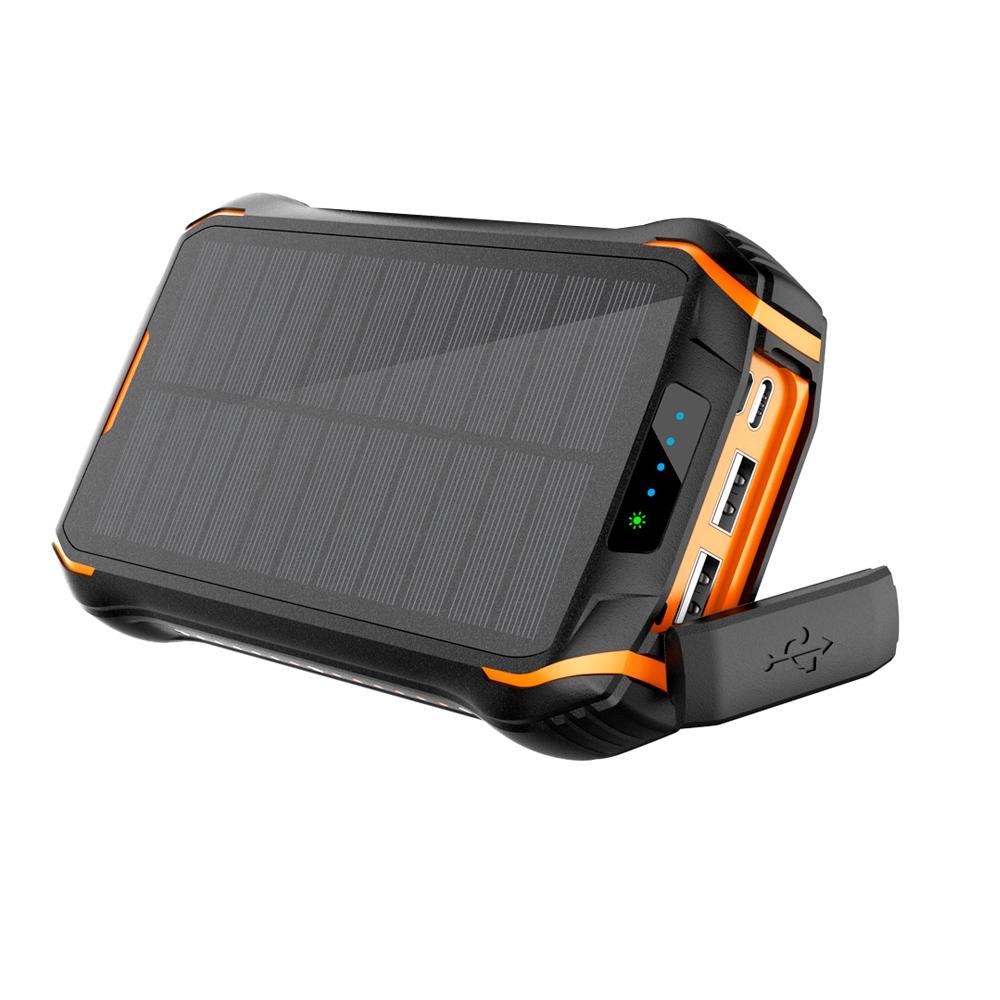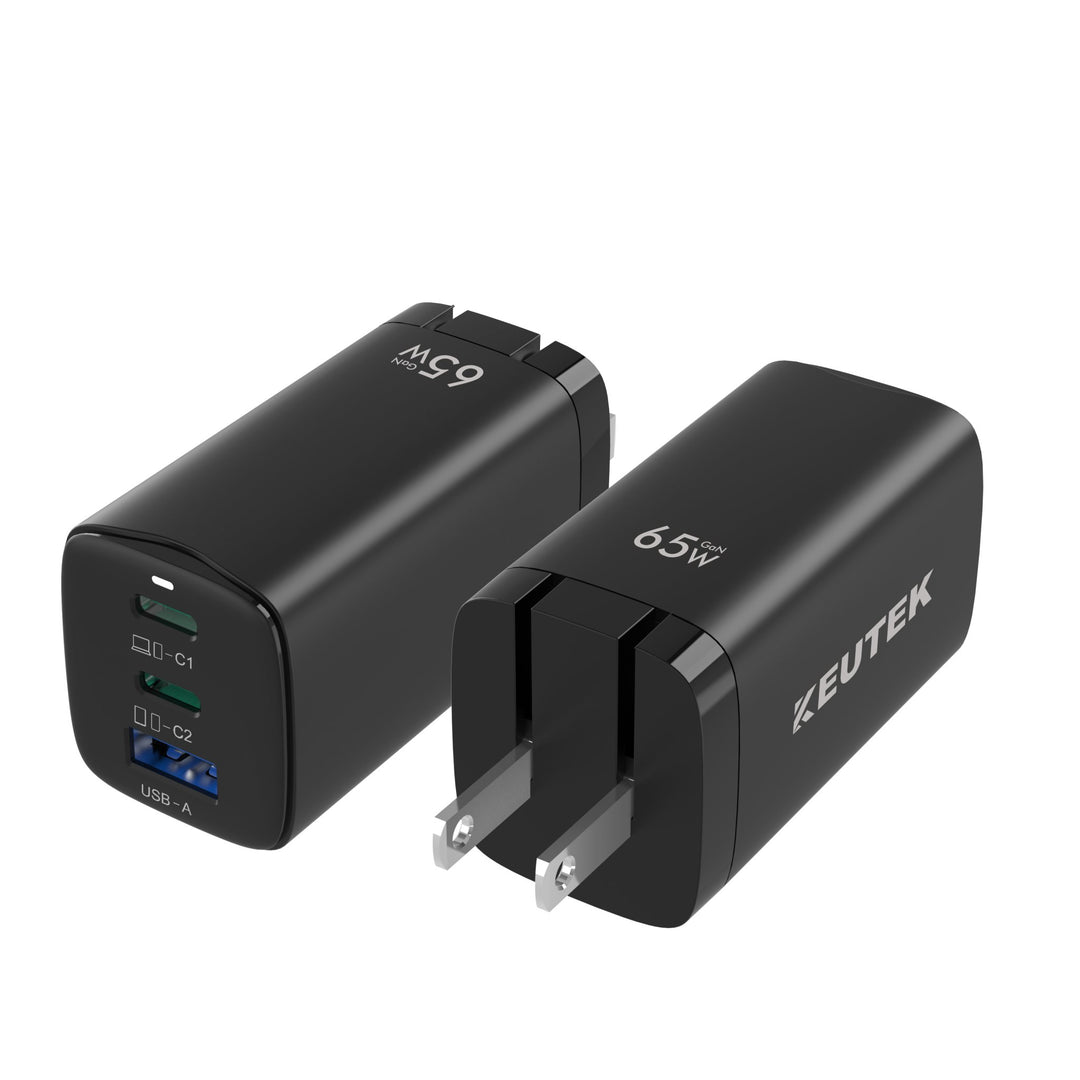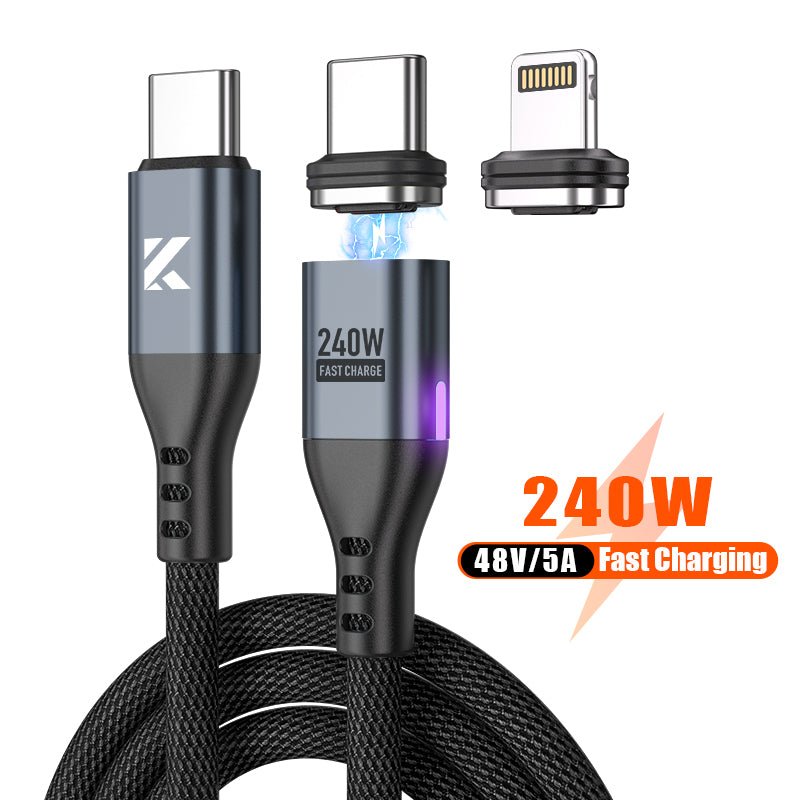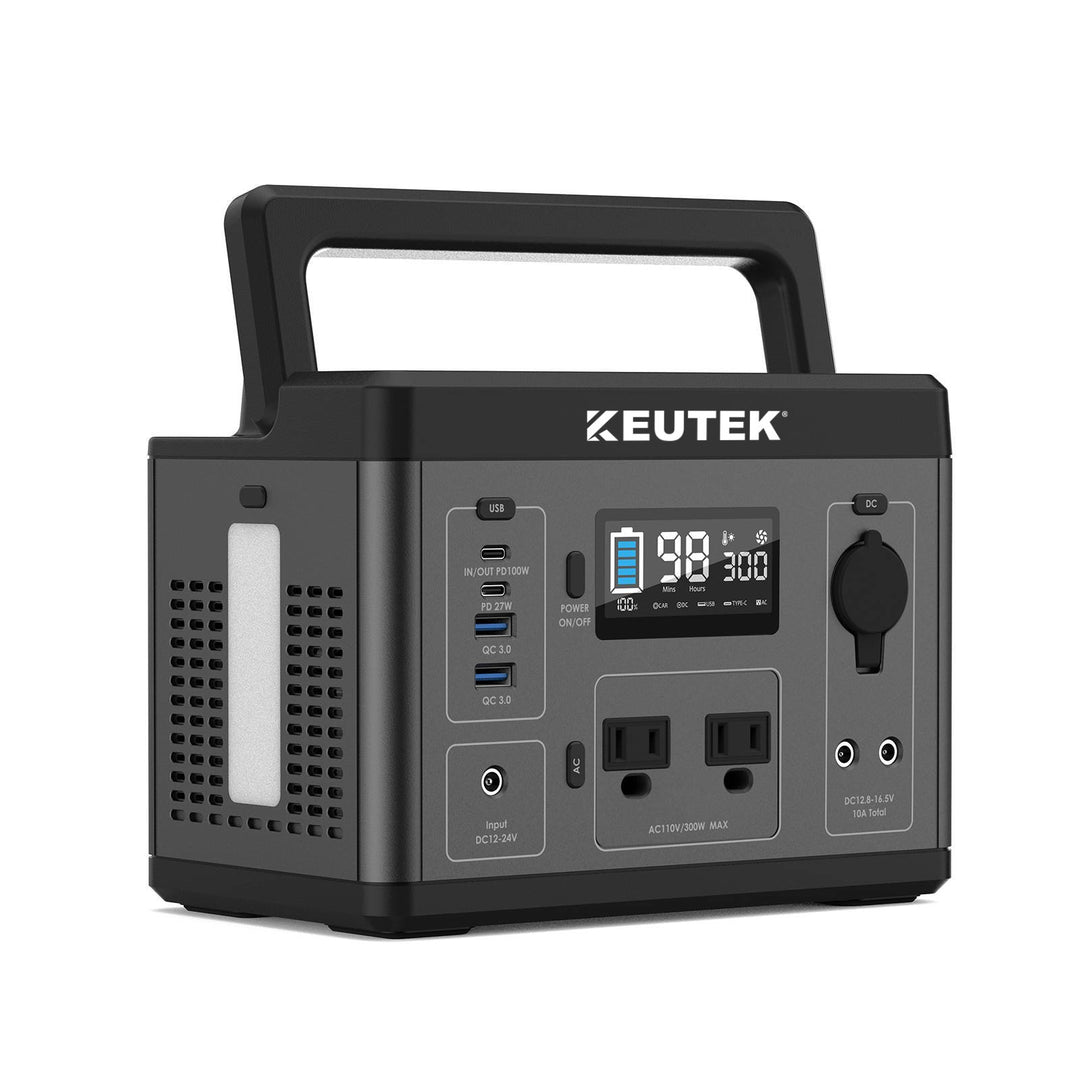Mountain Biking for Beginners: Essential Gear and Riding Tips

Mountain biking is an amazing experience. It's about more than just the adrenaline rush. From choosing the perfect mountain bike to exploring new trails, this guide covers everything you need to know. We'll talk gear, riding styles, and basic maintenance. Plus, we'll cover safety and trail etiquette so you can ride confidently. Let's get started!
In this article, we'll discuss how to start mountain biking yourself. We'll go over everything from different types of mountain bikes to essential gear. Let's take a closer look!

Portable Solar Power Bank 26800mAh - 99Wh Fast Charger
Lithium Polymer (Li-Po) battery. PD fast charging. Holds up to 8 days of reliable power on a single charge. Boasts a charging speed 50% faster than ordinary portable chargers.
Shop NowWhich Mountain Bike is Right for You?

The surge in mountain biking's popularity has resulted in a diverse range of bikes tailored for specific terrains, riding styles, and budget allocations. Exploring these is the first step to a perfect ride:
Key Takeaways
- Find your perfect mountain bike: Consider your riding style and preferred terrain when selecting a mountain bike. Research various types (trail, cross-country, enduro, downhill) and understand key components like frame material and suspension to make the best choice for your needs.
- Gear up for the trails: Invest in a well-fitting helmet and other protective gear like knee and elbow pads and gloves. Choose comfortable, functional clothing designed for mountain biking, and pack essentials like a portable charger, water, and snacks.
- Plan your adventure: Research trail conditions, map your route, and inform someone of your plans before heading out. Pack a repair kit, first-aid kit, and other essentials for a safe and enjoyable ride. Familiarize yourself with trail etiquette to ensure a positive experience for everyone.
Choosing the Right Mountain Bike for Your Needs
Finding the perfect mountain bike can feel overwhelming with so many options available. But don’t worry, it doesn’t have to be! By understanding the different types of bikes, key components, and budget considerations, you can confidently choose a bike that fits your riding style and needs.
Types of Mountain Bikes
Mountain bikes are categorized based on their intended use and terrain. Here’s a quick rundown of the most common types:
- Trail Bikes: These are the most versatile type of mountain bike, suitable for a wide range of trails. They offer a balance of climbing efficiency and descending capability. Check out BikesOnline for a great selection of trail bikes.
- Cross-Country (XC) Bikes: Designed for speed and efficiency on smoother trails, XC bikes are lightweight and have steeper geometry. Specialized is known for its high-performance XC bikes.
- Enduro Bikes: Built for aggressive riding and technical descents, enduro bikes feature longer travel suspension and slacker geometry. They can handle challenging terrain while still being efficient enough for climbs.
- Downhill Bikes: These bikes are purpose-built for high-speed descents and gravity-fueled riding. They have the most suspension travel and the slackest geometry.
Understanding Bike Components and Features
Once you’ve narrowed down the type of mountain bike you’re interested in, it’s important to consider the components and features. These can significantly impact the bike’s performance, durability, and price. For example, KEUTEK emphasizes performance and durability in our portable power solutions, just like how bike manufacturers focus on these aspects in their bikes.
- Frame Material: Common frame materials include aluminum and carbon fiber. Aluminum is more affordable and durable, while carbon fiber is lighter and offers a smoother ride. BikesOnline highlights the durability of their frames.
- Suspension: The suspension system absorbs bumps and impacts, providing a more comfortable and controlled ride. Specialized focuses on innovative suspension designs.
- Brakes: Reliable brakes are essential for safety and control. Look for powerful and responsive brakes that can handle steep descents.
- Drivetrain: The drivetrain consists of the gears, shifters, and derailleurs. A smooth and efficient drivetrain is crucial for optimal performance.
- Wheels and Tires: Choose wheels and tires that are appropriate for the type of terrain you’ll be riding. Wider tires provide more grip and stability on loose surfaces.
Bike Costs and Budgeting
Mountain bikes come in a wide price range, from a few hundred dollars to several thousand. Vilanobikes provides a good overview of average bike costs. Entry-level mountain bikes can be a great starting point for beginners, while more experienced riders may want to invest in a higher-end model with better components and features. Trek offers a range of mountain bikes at various price points.
When setting a budget, consider how often you plan to ride and the type of riding you’ll be doing. It’s also a good idea to factor in the cost of essential gear, such as a helmet, gloves, and protective pads. And don't forget to pack portable power for your devices! KEUTEK offers a range of fast-charging portable power solutions perfect for keeping your phone and other electronics charged on the go. Investing in a quality mountain bike and reliable gear can enhance your riding experience and ensure your safety on the trails.
Full-Suspension Mountain Bikes
- Definition: Bikes equipped with both front and rear suspensions.
- Benefits: Provides smoother rides across rocky terrains, offering enhanced stability.
Hardtail Mountain Bikes
- Definition: Bikes featuring only front suspension.
- Benefits: Economical, ideal for cross-country rides on relatively smoother trails.
Fat Bikes
- Definition: Bikes characterized by their wider tires.
- Benefits: Suitable for terrains like gravel, snow, and sand. They also deliver an enjoyable trail experience.
Mountain Biking Styles Explained: Cross-Country, Downhill & More

Mountain biking isn't a one-size-fits-all activity. Various styles cater to diverse preferences:
Cross-Country Mountain Biking
- Focus: Efficiency and swiftness over long distances.
- Challenges: Requires endurance and technical prowess.
All-Mountain Biking
- Focus: A mix of cross-country and downhill biking.
- Challenges: Requires versatility to handle both climbing and descents.
Downhill Mountain Biking
- Focus: Speed-centric, featuring large jumps.
- Challenges: Demands courage and commitment to handle extreme trail sections.
Trail Riding
Trail riding is like the Goldilocks of mountain biking—it’s just right for so many people. Think of it as the all-arounder. Trail bikes handle both climbs and descents, perfect if you enjoy a mix of terrains and challenges. You’ll find yourself cruising through flowing singletrack, navigating technical rocky sections, and enjoying some short climbs. It’s a great way to experience varied terrain without a super specialized bike.
Enduro
If the thrill of technical descents and challenging terrain calls to you, enduro might be your thing. Enduro bikes are built to withstand serious punishment—the beefier, more aggressive cousins of trail bikes. Expect longer travel suspension, slacker geometry, and durable components. Enduro often involves timed downhill sections, a great option if you’re competitive and love pushing your limits. Just be prepared for some challenging climbs to reach those rewarding descents!
Dirt Jumping and BMX
For those who love catching air and getting creative with tricks, dirt jumping and BMX offer a different kind of mountain biking. These bikes are designed for jumps and tricks on dirt tracks, skateparks, and pump tracks. Dirt jump bikes typically have hardtail frames built for durability, while BMX bikes are smaller and more agile. This style is about precision, control, and pushing your boundaries in the air, a great way to develop bike handling skills and have a blast. The sense of accomplishment after landing a new trick is unbeatable.
Must-Have Mountain Biking Clothing for Comfort and Safety

The proper attire can significantly impact your riding experience, ensuring both safety and comfort:
Shorts
Opt for lightweight, breathable shorts with adequate padding and multiple pockets for utility.
Jersey/T-shirt
Choose moisture-wicking materials to stay fresh and cool.
Gloves
Ensure they have adequate padding on the palms and fingers for maximum comfort while gripping.
Shoes
Stiff-soled shoes are ideal for power transfer during pedaling and should provide ample traction.
Helmets: Protecting Your Head
Helmets are non-negotiable for mountain biking. They provide crucial protection in case of falls or accidents. A well-fitted helmet significantly reduces the risk of head injuries. Make sure to choose a helmet specifically designed for mountain biking, as these offer more coverage than road cycling helmets. Look for features like adjustable straps and ventilation to ensure a comfortable and secure fit. Replacing your helmet after a crash is also essential, even if there's no visible damage, as the internal structure could be compromised.
Protective Gear: Staying Safe on the Trails
Beyond a helmet, additional protective gear can enhance your safety on the trails. Knee and elbow pads are a great idea, especially when you’re starting out or tackling technical terrain. They absorb impacts and prevent injuries during falls. Gloves not only improve your grip but also protect your hands from scrapes and blisters. Padded shorts offer extra cushioning and comfort on longer rides. As you progress, you might consider a back protector or body armor for more challenging downhill or enduro riding. Prioritizing safety with the right gear allows you to focus on enjoying the ride.
Clothing for Comfort and Performance
The right clothing can significantly impact your mountain biking experience. Lightweight, breathable shorts with adequate padding are essential for comfort in the saddle. Look for shorts with multiple pockets for carrying essentials like your phone, keys, or a multi-tool. Moisture-wicking jerseys or t-shirts will help keep you cool and dry, even on strenuous climbs. Stiff-soled shoes designed for mountain biking provide efficient power transfer to the pedals and offer excellent traction on the trails. Investing in comfortable and functional clothing will make your rides more enjoyable and help you perform at your best.
Must-Have Mountain Bike Accessories

Enhance your biking experience with these indispensable accessories:
Helmet
Always prioritize safety with a well-fitting helmet that meets established safety standards.
Pedals
Choose those that offer a good grip and are robust enough to handle rough terrains.
Bike Lights
Especially crucial for nighttime or low-light rides, opt for bright LED lights.
Water Bottle & Hydration Backpacks
Stay hydrated! Look for accessible water bottles and backpacks designed for long rides.
Tool Kit
Be prepared for emergencies with basic repair tools like tire levers and patch kits.
Portable Power Bank
For tech-savvy bikers using gadgets, consider the KEUTEK Portable Solar Power Bank, ensuring your devices remain charged throughout.
Essential Gear for Every Ride
The proper attire can significantly impact your riding experience, ensuring both safety and comfort. Here's a breakdown of the essentials:
Helmet: Prioritizing safety starts with a well-fitting helmet that meets established safety standards. Don’t skimp on this—your head will thank you.
Pedals: Invest in pedals that offer a good grip and are robust enough to handle rough terrains. Clipless pedals, which lock into compatible shoes, maximize power transfer, while sturdy platform pedals provide a wider, more stable base.
Bike Lights: Crucial for nighttime or low-light rides, bright LED lights are non-negotiable. A front light illuminates the trail, while a rear light ensures you're visible to others.
Water Bottle & Hydration Backpacks: Staying hydrated is key, especially on longer rides. Choose easily accessible water bottles and hydration backpacks designed for biking. A hydration pack keeps water readily available without having to reach for a bottle.
Tool Kit: Be prepared for trailside emergencies with a basic repair kit. Pack tire levers, a patch kit, a multi-tool, and a small pump to handle common mechanical issues.
Enhancing Your Riding Experience with Tech and Tools
Beyond the essentials, tech and tools can elevate your mountain biking experience. Here are a few game-changers:
GPS Bike Computer: Track your speed, distance, elevation, and navigate trails with a dedicated GPS bike computer. Many models offer advanced features like heart rate monitoring and power meter compatibility, allowing you to analyze your performance and progress.
Action Camera: Capture your epic rides and share them with friends with a rugged action camera. Look for models with image stabilization and waterproofing for capturing smooth, clear footage, no matter the conditions.
Bike Multi-Tool: A compact multi-tool with a variety of Allen keys, screwdrivers, and chain tools is indispensable for trailside repairs. Choose one that fits your bike's specific needs, ensuring you have the right tools to address common mechanicals.
Power Up Your Adventures with KEUTEK Portable Power
For tech-savvy bikers who rely on devices like GPS units and action cameras, a reliable power source is essential. The KEUTEK Portable Solar Power Bank is designed for outdoor adventures, providing a robust and convenient way to keep your devices charged on the go. With its fast charging capabilities and long-lasting battery, you can stay connected and powered up throughout your ride, ensuring you never miss a moment of the action.
Mountain Biking for Beginners: Tips for a Safe Ride

Starting with mountain biking can be daunting. Here are some pointers to ease your initiation:
- Commence Gradually: Familiarize yourself with trails by starting with shorter rides.
- Stay Vigilant: Always be mindful of potential hazards.
- Equip Yourself: Ensure you have all the necessary gear before setting out.
- Adhere to Trail Norms: Respect designated trails and other riders.
- Plan Ahead: Familiarize yourself with your route and duration.
Planning and Preparing for Your Ride
Planning your mountain biking adventures is key to a smooth and enjoyable experience. Think of it like prepping for a road trip—you wouldn’t hit the highway without a map and a full tank of gas, right? Same goes for the trails. First, consider the trail conditions. Check recent trail reports for closures, hazards, or updates. Knowing the terrain—rocky, rooty, steep—helps you choose the right gear and prepare mentally. Next, map your route. Use a trail mapping app or website to familiarize yourself with the distance, elevation gain, and difficulty level. This also helps you estimate how much time you'll need.
Speaking of time, factor in extra for breaks, mechanical issues, or unexpected delays. Letting someone know your plans is always a good idea. Share your route and estimated return time with a friend or family member, just in case. Lastly, pack the right gear. Bring plenty of water and snacks to stay energized and hydrated. A portable power bank, like the ones KEUTEK offers, can be a lifesaver for keeping your phone and other devices charged, especially on longer rides. A basic first-aid kit is essential for minor injuries.
Don't forget a multi-tool, tire levers, and a spare tube or patch kit for trailside repairs. And finally, remember sunscreen, insect repellent, and a lightweight rain jacket, because mountain weather can change in an instant.
Trail Etiquette: Respecting the Trails and Fellow Riders
Mountain biking etiquette is all about sharing the trails responsibly and respectfully. It ensures everyone has a safe and positive experience. Yielding right of way is one of the most important rules. Downhill riders yield to uphill riders. If you’re approaching a slower rider from behind, politely announce your presence and give them time to move over. At intersections, yield to riders on your right.
Stay on marked trails to avoid damaging the surrounding environment and respect trail closures. These are often put in place to protect sensitive ecosystems or for maintenance. Pack out everything you pack in, including trash and food scraps. No one wants to see your orange peels on the trail. And finally, be mindful of the noise level. Keep your music down and avoid shouting, so everyone can enjoy the peace and quiet of nature.
Being considerate of other trail users extends beyond just mountain bikers. Hikers, runners, and horseback riders also share the trails. Be aware of their presence and yield appropriately. A friendly greeting or a simple nod goes a long way in creating a positive atmosphere. Remember, we’re all out there to enjoy the outdoors. By following these simple etiquette guidelines, we can ensure a safe and enjoyable experience for everyone.
Basic Bike Maintenance for Beginners
Knowing some basic bike maintenance can save you a lot of hassle on the trail. Regular upkeep keeps your bike running smoothly and can prevent costly repairs down the road. Start with the ABCs: air, brakes, and chain. Check your tire pressure before every ride and inflate them to the recommended PSI, which is usually printed on the tire sidewall. Test your brakes to make sure they’re engaging properly and not rubbing against the rotors.
Lubricate your chain regularly to keep it clean and prevent rust. A dry, squeaky chain is a sign it needs some love. Learning how to fix a flat tire is a crucial skill for any mountain biker. Carry a spare tube, tire levers, and a pump or CO2 inflator. Practice changing a flat at home before you need to do it on the trail. Other essential maintenance tasks include cleaning your bike after each ride, especially if it’s muddy, and periodically checking your bolts to make sure they’re tight.
If you’re not comfortable doing these things yourself, take your bike to a local bike shop for a tune-up. A little preventative maintenance goes a long way in keeping your bike in top condition and ensuring a safe and enjoyable ride.
Ready to Ride? Your Mountain Biking Adventure Starts Now

Mountain biking is an experience like no other. Whether you’re new to the sport or a seasoned veteran, this guide gives you everything you need to make your next mountain biking adventure one to remember.
Equipped with the right knowledge and gear, your biking endeavors will be safe and rewarding. Set out on your next mountain biking adventure today!

Portable Solar Power Bank 26800mAh - 99Wh Fast Charger
Lithium Polymer (Li-Po) battery. PD fast charging. Holds up to 8 days of reliable power on a single charge. Boasts a charging speed 50% faster than ordinary portable chargers.
Shop NowFrequently Asked Questions
Is Mountain Biking Hard for Beginners?
With proper gear and adherence to safety guidelines, even beginners can savor the mountain biking experience.
Can You Mountain Bike Every Day?
While it's excellent exercise, allowing recovery time between rides is essential.
Common Mountain Biking Mistakes to Avoid
Refrain from neglecting safety gear, overestimating your skills, or ignoring maintenance can hamper the biking experience.







Leave a comment